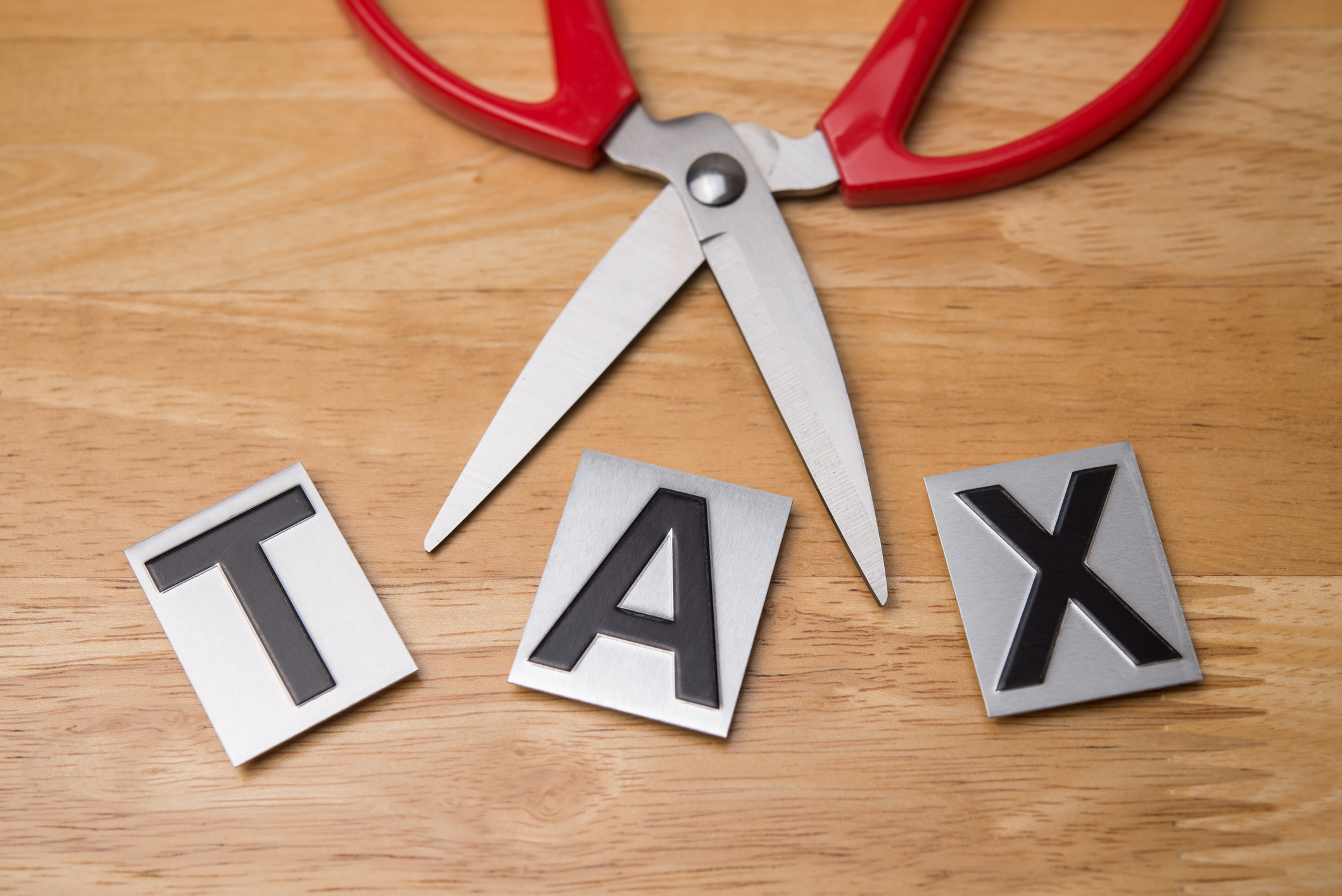Trump’s Latest Pitch: No Taxes If You Earn Less Than $150K?
The Trump administration reportedly wants to eliminate taxes for certain earners.


President Donald Trump has flirted with the idea of abolishing the IRS and creating a revenue stream from tariffs to offset major tax cuts. His latest pitch reportedly calls to end taxes for individuals earning less than $150,000 a year.
“I know what his goal is — no tax for anybody making under $150,000 a year,” Commerce Secretary Howard Lutnick told CBS News. “That’s his goal. That’s what I’m working for.”
Lutnick later walked his assertion back adding that Trump would consider such a massive tax cut if he were able to balance the budget (a feat that hasn't been accomplished since 2001 under the Clinton administration, when the U.S. last experienced a fiscal year-end budget surplus). The U.S. has only experienced a budget surplus four times in the last 50 years, according to the U.S. Treasury Department.
From just $107.88 $24.99 for Kiplinger Personal Finance
Become a smarter, better informed investor. Subscribe from just $107.88 $24.99, plus get up to 4 Special Issues

Sign up for Kiplinger’s Free Newsletters
Profit and prosper with the best of expert advice on investing, taxes, retirement, personal finance and more - straight to your e-mail.
Profit and prosper with the best of expert advice - straight to your e-mail.
The Trump administration’s tax strategy also aims to eliminate taxes on Social Security benefits, tips, and overtime pay, and implement significant tax cuts that experts argue largely benefit the wealthy.
The likelihood that this proposal to end taxes for such a large portion of the population will move forward is dubious. Though Trump has previously made comments about his wishes to “abolish income taxes,” the Trump administration has not shared any further details.
However, here’s what we know so far.
Related: Check out Kiplinger's tax blog for the 2025 filing season. We're providing live updates, news, information, and commentary to help you navigate your taxes.
How many U.S. taxpayers earn less than $150K?
President Trump's pitch to eliminate taxes for individuals earning less than $150,000 could arguably benefit most of the U.S. population. According to the latest statistics from the U.S. Census Bureau, over 76% of individuals in the country earn less than that income limit. (Though some estimates put that number closer to 90%.)
In 2025, data show the average household income was $80,610. A breakdown of average earnings by age group wasn’t close to $150K. For instance, the median household income was:
- $85,780 for those between the ages of 25 to 34
- $101,300 for 35 to 44 year olds
- $110,700 for 45 to 54 year olds
- $90,640 for 55 to 64 year olds
Meanwhile, those 65 and older earned an average of $54,710. That figure may count in retirement earnings such as Social Security benefit checks. A deeper dive into the numbers shows that less than a quarter of individuals in the U.S. earn more than $150,000.
Household Income | Percentage of U.S Population |
Under $15,000 | 7.4% |
$15,000 to $24,999 | 6.7% |
$25,000 to $34,999 | 6.9% |
$35,000 to $49,999 | 10.3% |
$50,000 to $74,999 | 15.7% |
$75,000 to $99,999 | 12.1% |
$100,000 to $149,000 | 17% |
$150,000 to $199,999 | 9.5% |
$200,000 and over | 14.4% |
Source: U.S. Census Bureau, Table A-2 Households by Total Money Income, Race, and Hispanic Origin of Householder: 1967 to 2023.
Trump $150K tax proposal concerns
However, the proposal to end taxes for individuals making under $150K raises several serious practical and economic concerns:
- How would ending taxes for certain income groups impact work incentives?
- Could this plan result in a nationwide sales tax?
- What about tax fairness? Would those earning just above $150K bear a disproportionate tax burden?
- How will the U.S. build revenue if it abolishes income taxes for most of its population?
According to Lutnick, offsetting the lack of taxes for that segment of the population would be achieved by implementing tariffs on foreign nations. That suggests the U.S. wouldn't be paying existing deficits due to the tax cuts proposed by Trump.
“His [Donald Trump’s] goal is to have external revenue,” Lutnick said, referring to placing duties on imported goods to the U.S. “...The rest of the world leans on our economy, breathes off our economy. Let them pay a membership fee.”
Who pays for tariffs?
Mr. Lutnick’s statement on tariffs raises other concerns touted by economists. While abolishing taxes for certain income groups sounds like a good idea on paper, tariffs alone may not be enough to drive revenue to fulfill this promise.
For instance, tax policy experts at the Tax Policy Center already doubt that tariffs would be enough to afford Trump’s campaign promises such as addressing the childcare affordability crisis.
- As mentioned, the Trump administration added cutting taxes on overtime and tips, as well as potentially extending tax provisions from the expiring Tax Cuts and Jobs Act (TCJA) under ‘one, big beautiful bill’ to his list of pledges.
- To make those cuts work and balance U.S. deficits, GOP lawmakers have floated enacting budget cuts to popular tax breaks and programs like Medicare.
It’s worth noting that tariffs on imported goods from Canada, for example, are paid by United States businesses. That import tax is generally passed on to consumers like you. That means that tariffs aren’t external revenue, as the Trump administration is swaying people to believe.
The tax can also cause financial strain.
Tariffs are also known as “regressive taxes” because they disproportionately impact lower and moderate-income households. For instance, during the 2018 trade war with China, the Trump administration authorized $61 billion in emergency relief payments to farmers and ranchers impacted by retaliation.
Trump taxes: What’s next?
The Trump administration hasn't detailed plans to end taxes for those earning less than $150,000. Mr. Lutnick, however, later characterized the proposal as “aspirational” if Trump balances the national budget. As mentioned, a task that has not been achieved since 2001.
Instead, President Trump has been busy doubling down on tariffs.
- In his first 50 days in office, Trump's administration has been embroiled in tariff wars with Canada, Mexico, Colombia, China, India, and the European Union.
- As reported by Kiplinger, President Trump recently placed global blanket 25% tariffs on all aluminum and steel imports to the U.S. on March 12.
- The Trump administration plans to place global reciprocal tariffs on all foreign nations on April 2, and reinstate 25% tariffs on Canadian and Mexican imports.
Additionally, the Trump administration has said it plans to create an External Revenue Service to collect tariffs from foreign nations. The new government agency would seemingly be an effort to replace the IRS and, apparently, the U.S. Customs and Border Protection (CBP).
But stay tuned. The Republican-led Congress is currently working to extend or make permanent the Tax Cuts and Jobs Act (TCJA), which is the signature tax legislation from Trum's first term. Whether promised tax cuts for overtime pay, Social Security benefits, tips, and the newest pledge for those making less than $150K make their way into any final legislation remains to be seen.
This article has been updated to reflect the Commerce Secretary's subsequent statements about Trump's tax plans.
Related Content
- Trump’s Tariffs on Metals to Slam Soda and Housing Prices in U.S.
- What's Happening With Taxes on Overtime Pay?
- Trump’s Trade War Targets Your Groceries
Profit and prosper with the best of Kiplinger's advice on investing, taxes, retirement, personal finance and much more. Delivered daily. Enter your email in the box and click Sign Me Up.

Gabriella Cruz-Martínez is a finance journalist with 8 years of experience covering consumer debt, economic policy, and tax.
Gabriella’s work has also appeared in Yahoo Finance, Money Magazine, The Hyde Park Herald, and the Journal Gazette & Times-Courier.
As a reporter and journalist, she enjoys writing stories that empower people from diverse backgrounds about their finances, no matter their stage in life.
-
 How to Protect Yourself and Others From a Troubled Adult Child
How to Protect Yourself and Others From a Troubled Adult ChildThis case of a violent adult son whose parents are in denial is an example of the extreme risks some parents face if they neglect essential safety precautions.
-
 To Build Client Relationships That Last, Embrace Simplicity
To Build Client Relationships That Last, Embrace SimplicityAs more automation becomes the norm, you can distinguish yourself as a financial professional by using technology wisely and prioritizing personal touches.
-
 Client Demand Is Forcing Advisers to Specialize: How to Deliver
Client Demand Is Forcing Advisers to Specialize: How to DeliverThe complexity of wealthy clients' needs — combined with AI and consumer demand — suggests the future of financial planning belongs to specialized experts.
-
 Holiday Tax Scams 2025: 'Tis the Season to be Wary
Holiday Tax Scams 2025: 'Tis the Season to be WaryTax Scams Navigating tax tricks of the holiday season may be daunting, but don't let that destroy your festive spirit
-
 Retirees in These 7 States Could Pay Less Property Taxes Next Year
Retirees in These 7 States Could Pay Less Property Taxes Next YearState Taxes Retirement property tax bills could be up to 65% cheaper for some older adults in 2026. Do you qualify?
-
 Estate Tax Quiz: Can You Pass the Test on the 40% Federal Rate?
Estate Tax Quiz: Can You Pass the Test on the 40% Federal Rate?Quiz How well do you know the new 2026 IRS rules for wealth transfer and the specific tax brackets that affect your heirs? Let's find out!
-
 'The 'Mamdani Effect' in New York: Can the City Afford a Millionaire Tax?
'The 'Mamdani Effect' in New York: Can the City Afford a Millionaire Tax?State Tax Will higher income taxes drive the wealthy to flee New York in 2026?
-
 The November CPI Report Is Out. Here's What It Means for Rising Prices
The November CPI Report Is Out. Here's What It Means for Rising PricesThe November CPI report came in lighter than expected, but the delayed data give an incomplete picture of inflation, say economists.
-
 Law Reversal Looming? Trump Eyes 2026 Gambling Winnings Tax Change
Law Reversal Looming? Trump Eyes 2026 Gambling Winnings Tax ChangeTax Deductions It's no secret that the IRS is coming after your gambling winnings in 2026. But how long will that last?
-
 Trump's Plan to Eliminate Income Tax: 7 Things to Know Now
Trump's Plan to Eliminate Income Tax: 7 Things to Know NowTax Policy The potential consequences of eliminating taxes in favor of Trump tariffs could impact everything from inflation to Social Security and might give some U.S. taxpayers pause.
-
 5 Types of Gifts the IRS Won’t Tax: Even If They’re Big
5 Types of Gifts the IRS Won’t Tax: Even If They’re BigGift Tax Several categories of gifts don’t count toward annual gift tax limits. Here's what you need to know.